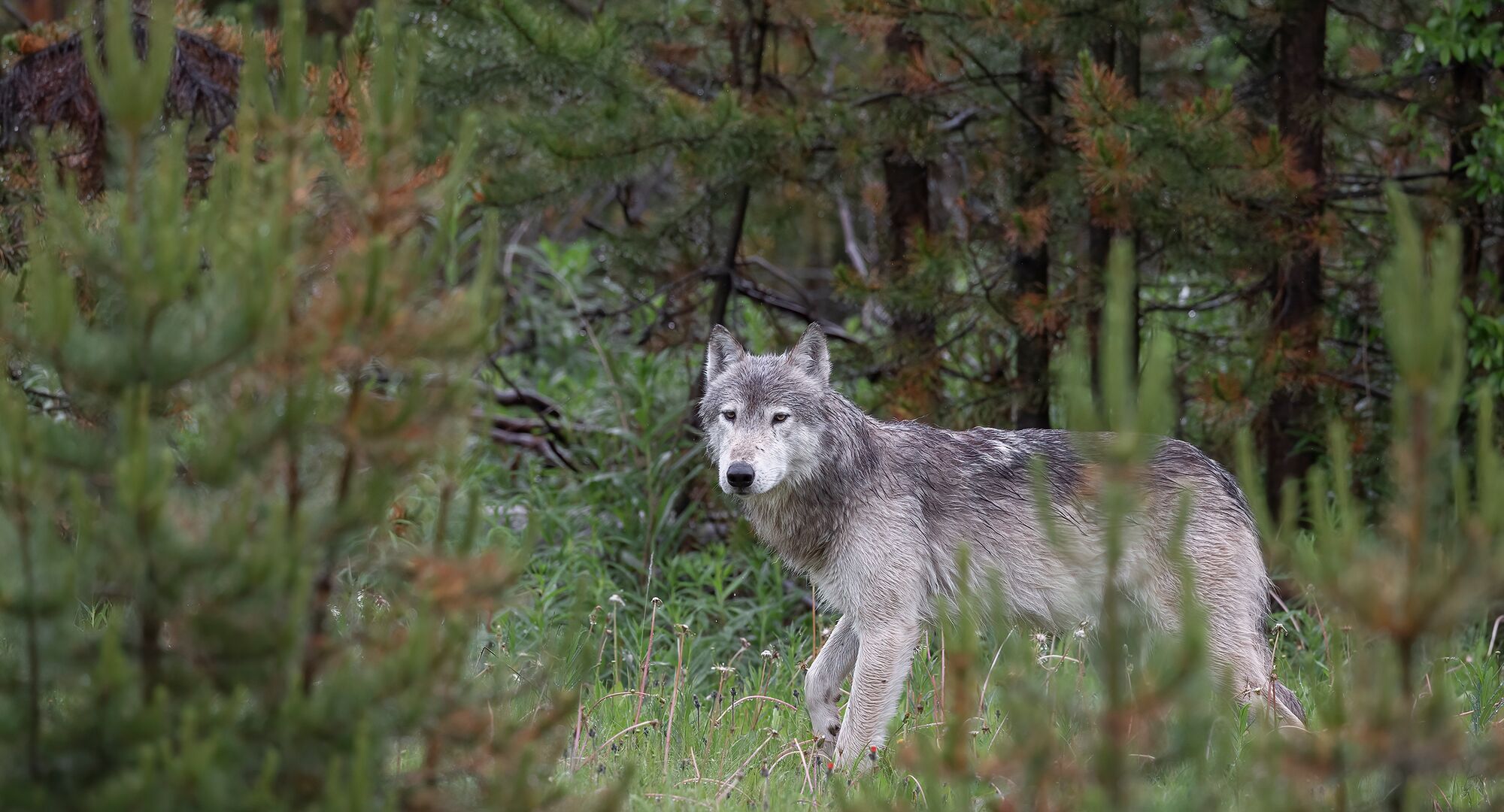An Intro to the Wildlife of Banff National Park
- Jan 20, 2020|
- Nature & Wildlife

As the sun softens the cover of morning mist, a pair of antlers emerge in the copper meadow. A male elk surveys the scene before him; his breath creates a hazy trail in the autumn air. He tilts his head back and calls, splintering the silence with his bugle. Your eyes meet his for a moment before he turns and fades into the cover of the forest.
Encounters with wildlife are the kind of experiences that etch themselves permanently in your memories. A trip to Banff National Park can provide a unique opportunity to view iconic Canadian animals in their natural habitat. Here are a few species you might encounter during your visit:
Elk
It’s relatively common to see a herd of these majestic grazers on a visit to Banff National Park. Some elk migrate to higher elevations during the summer to take advantage of emerging vegetation, while others remain in valley bottoms throughout the year. Male elk grow new antlers every spring in preparation for the fall breeding season, known as the rut.
Osprey
If you’re visiting Banff in spring or summer, you might be able to catch a glimpse of this beautiful, migratory bird. Osprey live near lakes and rivers where they hunt for fish and small amphibians. Osprey typically mate for life and will return to the same nest every year.
Bighorn sheep
Not to be confused with mountain goats, bighorn sheep are mostly brown with a white muzzle and rump. Both rams and ewes have horns, although the rams are much more prominent and have a distinctive curl. When two rams are vying for the attention of a ewe they will sometimes go head-to-head, using their impressive horns as battering rams.
Pika
Pika sentries sound the alarm with a shrill peeeeeee-ka when danger approaches. These animals, which are closely related to hares and rabbits, live in colonies in alpine boulder fields. While hiking, keep your eyes open for "pika piles," small clumps of vegetation that pikas collect and leave out to dry on flat rocks.
Grizzly bear
Around 65 of these awe-inspiring animals call Banff National Park home. Grizzly bears can be distinguished from black bears by their grizzled, silver-tipped hair, prominent shoulder humps, and long claws. Female grizzly bears care for their offspring until they are three or four years old, teaching them how to forage and travel in their habitat. To learn how to be bear-aware please visit Parks Canada’s website and don’t forget to carry bear spray.
Hoary marmot
Also known as whistle-pigs, hoary marmots live in subalpine meadows. You’ll often hear a marmot’s trademark whistle before you see it stretched out on a boulder or ambling along a trail. Marmots are made for digging and spend the winters hibernating in their burrows.
Banff Springs Snail
This tiny mollusc is actually the most endangered species in Banff National Park! The only place in the world where Banff Springs snails live are the hot springs on Sulphur Mountain. Specially adapted to this harsh environment they are indicators of the health of the thermal spring ecosystems where they live. You can spot Banff Springs snails at the Cave and Basin National Historic Site.
Respecting wildlife
Please respect all wildlife you encounter and remember that Banff National Park is their home. For information on viewing wildlife responsibly please watch this video.

Interested in learning more?
Visit our wildlife page and consider joining an Evening Wildlife Safari or visiting the interpretive centre at the Lake Louise Ski Resort & Summer Gondola. The Banff Park Museum National Historic Site is another option, with an extensive taxidermy collection of local specimens.